
Imagine living in a vast, frigid, and treeless region with little sign of life and a permanent layer of ice on the ground. This is life in the tundra for those capable of surviving. The tundra is a barren Arctic region in Europe, Asia, and North America. Life does not thrive here like in other areas of the world, except for the few creatures that feature particular adaptations to withstand the harsh conditions of the Arctic. Meet ten animals that live in the tundra and discover their secrets to surviving the bitter cold and finding food.
Polar Bear
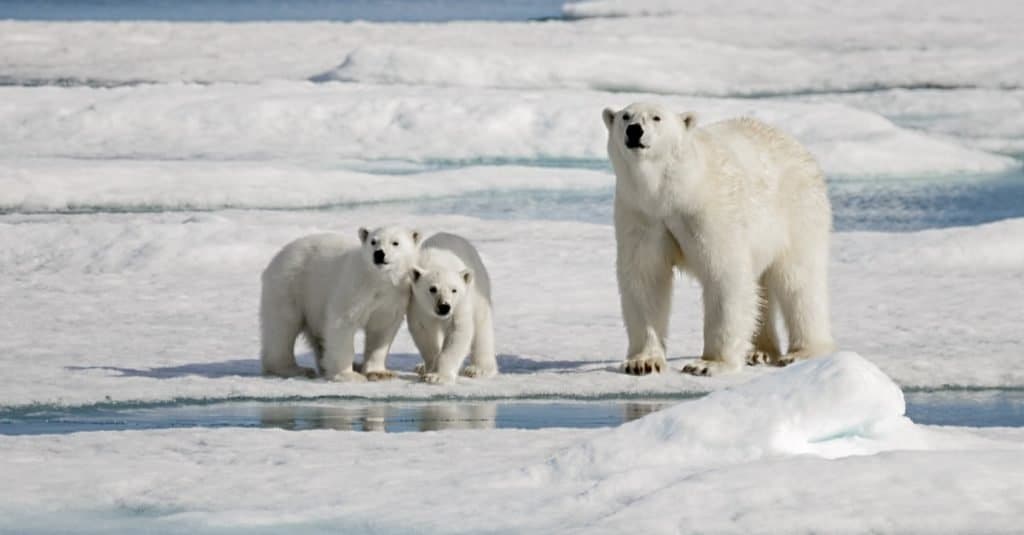
A
Polar bear
mother with two cubs on ice. Polar bears are born tiny and completely helpless, but grow up to be the largest carnivore on land
©Alexey Seafarer/Shutterstock.com
Polar bears, the largest bear species on earth, feature several adaptations to help them thrive in their tundra environment. They have a thick layer of blubber (fat) and two layers of fur, allowing them to survive temperatures as low as -50 degrees Fahrenheit. Their fur features a greasy coating that acts as a water-resistant surface, which helps to reduce heat loss. And they use the snow to dry off by rolling around in it after they get out of the water. Food is limited in the Arctic and most creatures can easily see a 1,500-pound bear charging. But their white coloring camouflages them against the stark white background.
Snow Leopard
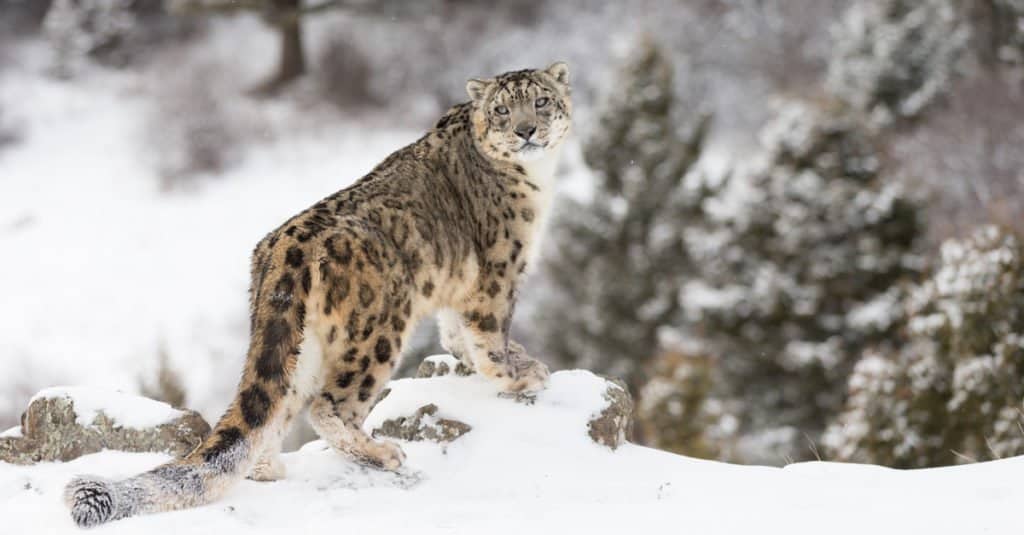
A
snow leopard
is a type of big cat native to the Himalayas.
©Dennis W Donohue/Shutterstock.com
Snow leopards live in high-alpine areas in the Himalayas. Their habitat features rocky outcrops, cliffs, deep snow, and very little vegetation. But this big cat thrives in its environment as an apex predator. This leopard stalks its prey from rugged cliffs, slowly descending and pouncing before being seen. Their unique coloring and patterning blend perfectly with their rocky tundra environment. Their fur is extra thick, protecting them from below-freezing temperatures. And their ears are short and round, helping to reduce heat loss. They also have enormous paws that act like snowshoes, which keep them from sinking into the snow.
Tundra Swan

The tundra swan nests in pairs across the tundra. They will aggressively defend their nests against predators.
©Sergey Uryadnikov/Shutterstock.com
As its name suggests, the tundra swan is well-adapted to life in the Arctic regions. They nest in pairs spread out across the tundra and can be extremely aggressive when defending their territories from predators. They build their nests near wetlands, lining the structures with moss and grasses. Once winter begins, these birds move south to estuaries and inland lakes. Their long necks help them find food by allowing them to dip their heads underwater. The tundra features marshes, lakes, and bogs during the warmer months.
Walrus
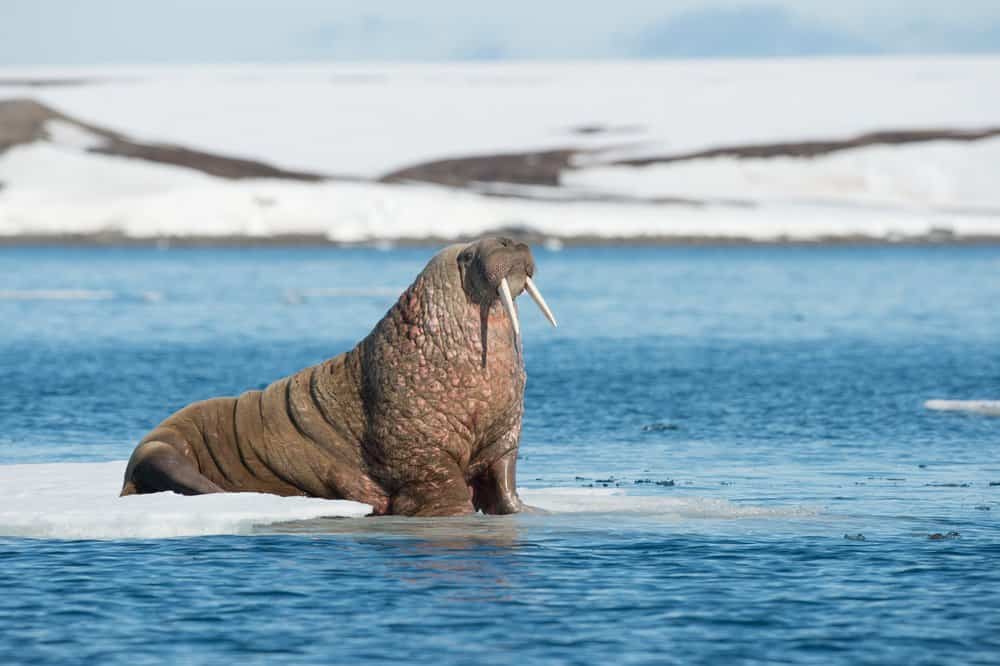
The walrus uses its giant tusks to pull itself out of the water and onto the ice. They can also use them to puncture breathing holes.
©Inge Jansen/Shutterstock.com
The walrus is a behemoth pinniped marine animal with giant tusks. Their appearance can be intimidating, but their features and enormous size serve a purpose. They use their tusks to pull themselves out of the water and onto the ice. They also use them to puncture holes in the ice for breathing. The tusks serve as weapons to defend their territories from other walruses or to fight off predators. The walruses’ blubbery body contains a four-inch thick layer of fat that keeps their internal organs nice and toasty no matter the temperature.
Snow Petrel
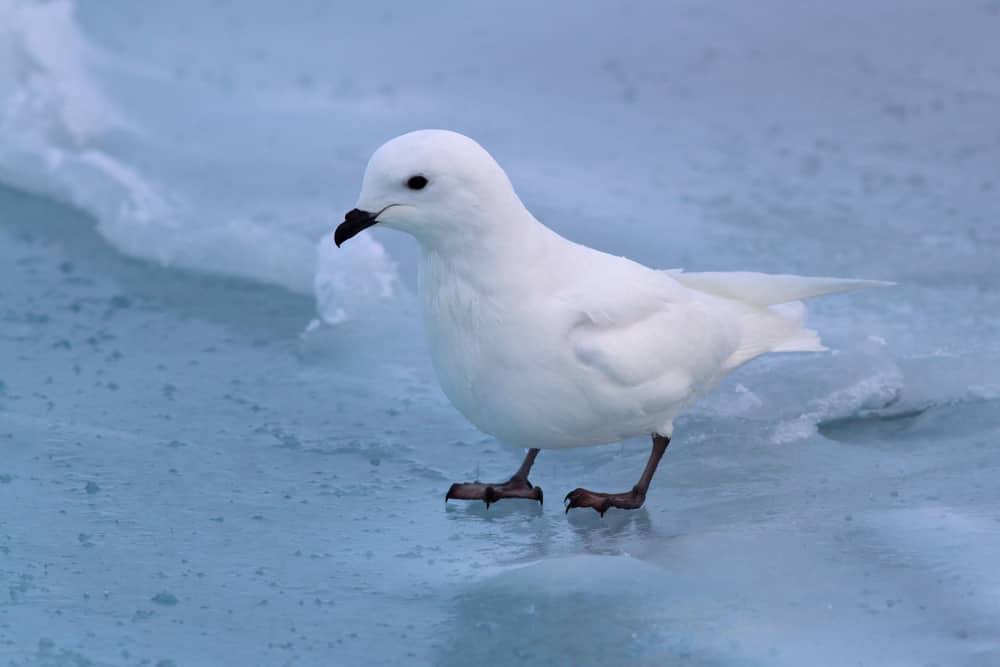
Snow petrels fly around icebergs on the open sea, landing on pack ice. They make shallow dives into the freezing water to find fish.
©Tarpan/Shutterstock.com
The snow petrel is one of the few birds known to inhabit Antarctica. You can find them flying around icebergs on the open sea, subarctic islands, and even pack ice. They are about the size of a pigeon and use their snow-white coloring to blend with their bleak, snowy environments. And they feed by making shallow dives into the freezing water and fly high over land to avoid predators like skuas. They also don’t have to search for fresh water. Snow petrels consume saltwater with their food, sneezing out excess liquid salt.
Bighorn Sheep

The
bighorn sheep
inhabits the high-alpine tundra during the summer. They use steep, rocky terrain to escape predators.
©John Raptosh/Shutterstock.com
Bighorn sheep are native to North America, where they graze in high-alpine tundra during the summer. They spend their days climbing steep rocky terrain, where their predators are less likely to roam. Their outer hooves have special toenails that can hook onto the slightest rocky protrusion, and their pads provide grip on smooth or jagged surfaces. They also have complex digestive systems that allow them to soak up nutrients from sparse vegetation and tough plant material. They primarily use their horns to defend their territory from other rams, and they use their tough terrain to their advantage for escaping predators.
Wild Yak

Wild yaks are native to the alpine tundra of the Himalayas. Their dense coats keep them warm during the harshest weather.
©Murcidus Soul/Shutterstock.com
The wild yak is an impressive animal from the bovine family. They are native to the Himalayas, where they live in the alpine tundra and cold deserts in the Tibetan Plateau. One look at this creature is all you need to know about how they survive in their environments. Their coats feature dense underfur and long outer hair, helping them retain heat. They can survive temperatures of -40 degrees Fahrenheit and will huddle together to conserve energy. They also have virtually no sweat glands, and even their digestive systems keep them warm by digesting food at 104 degrees.
Arctic Hare
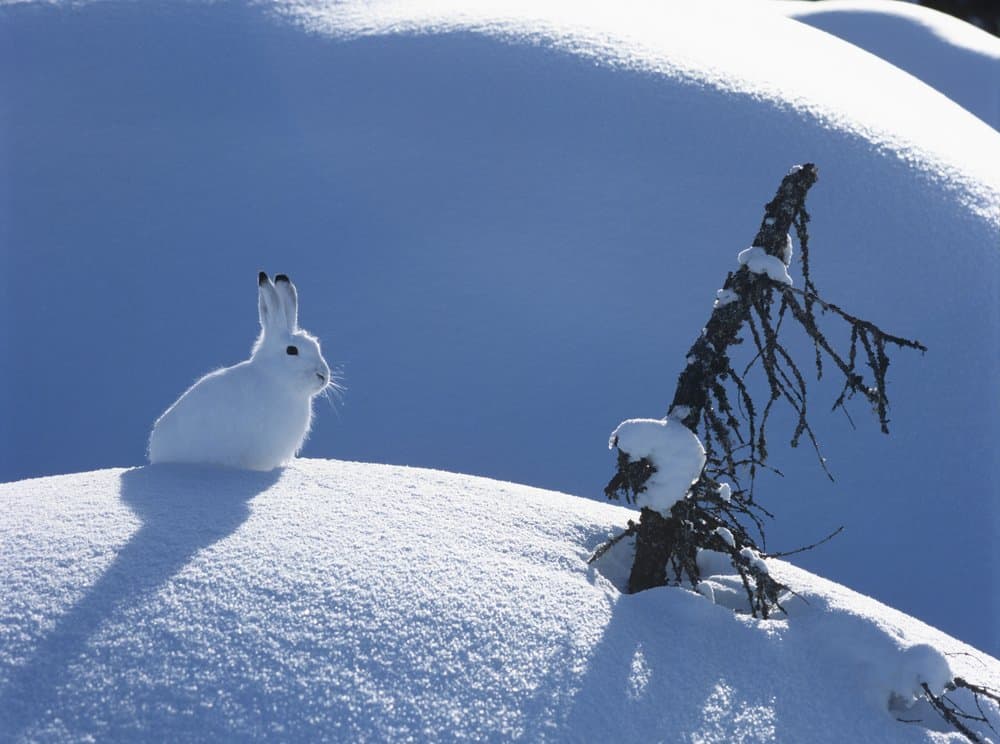
Arctic hares blend perfectly with their all-white environments, allowing them to easily escape predators.
©sirtravelalot/Shutterstock.com
The Arctic hare is a highly adapted animal that thrives in the Arctic tundra and other icy environments. Their snow-white fur keeps them hidden in their all-white habitats. But if they do get noticed, they can bounce along the snow and ice up to 40 miles per hour, outrunning most animals. They survive by digging through deep snow to find woody plants, mosses, and lichens. They will also burrow themselves under the snow during exceptionally frigid weather. Everything about this animal is well-adapted to life in the tundra, including its long hind feet, which act as snowshoes.
Snowy Owl
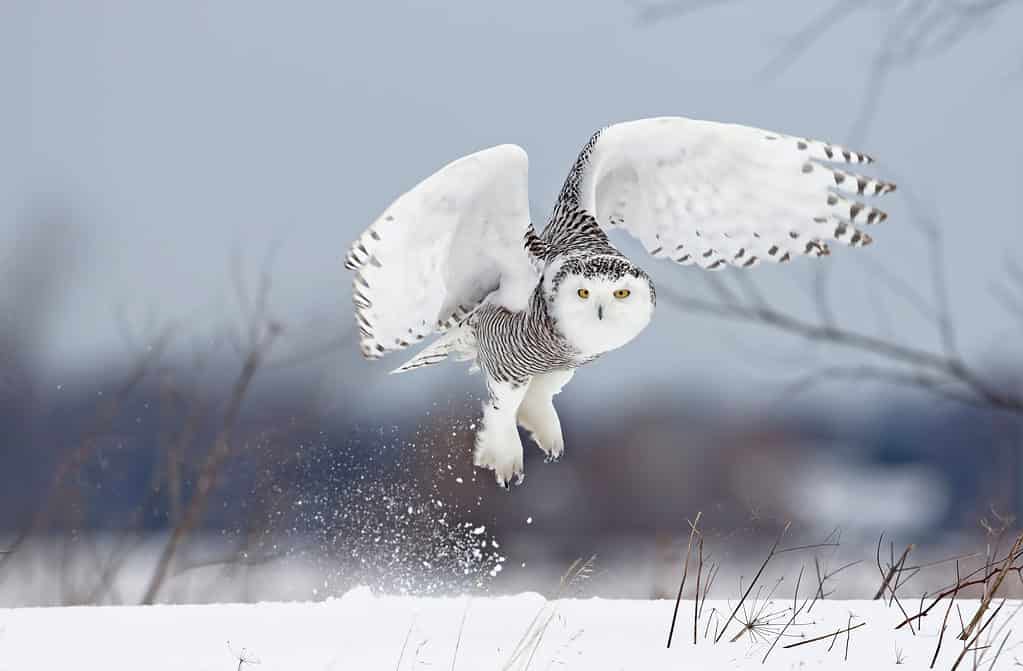
The
snowy owl
is more nomadic than migratory, departing its usual habitat at all times of the day and night to forage for prey.
©Jim Cumming/Shutterstock.com
Snowy owls, also known as polar owls, are native to the Arctic regions in North America and the Palearctic. They, too, are white like other creatures in this region. White is the best color to be when you live in constant snow and ice. Other than camouflage, these owls are homeotherms, meaning they can regulate their body temperatures. They also have dense feathers that keep their insides warm and long feathers that cover their legs and toes. This extra plumage can block the freezing wind but also adds protection against squirmy or feisty prey. And their excellent eyesight aids them in finding food in white-out conditions.
Arctic Fox

Arctic foxes have short muzzles, ears, and legs to help them conserve energy.
©JoannaPerchaluk/Shutterstock.com
The Arctic fox, or snow fox, lives throughout the Arctic tundra biome. Their all-white fur keeps them camouflaged against their snowy backdrops, and their dense hair maintains a consistent body temperature. They also feature short muzzles, ears, and legs, which help their bodies conserve energy. Their paws are not particularly big, like the Arctic hare’s paws, but they feature thick fur to help them walk and run on ice and snow. The dense fur on their paws also helps them sneak up on prey or escape predation by muffling the sound of their footsteps. To survive intense weather, they live in burrows, tunneling their way through the snow to shelter.
The photo featured at the top of this post is © outdoorsman/Shutterstock.com
Thank you for reading! Have some feedback for us? Contact the AZ Animals editorial team.






